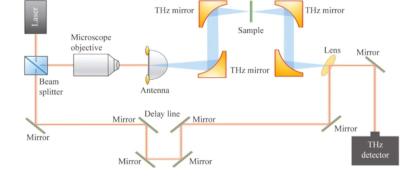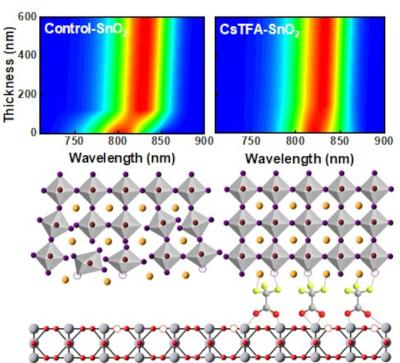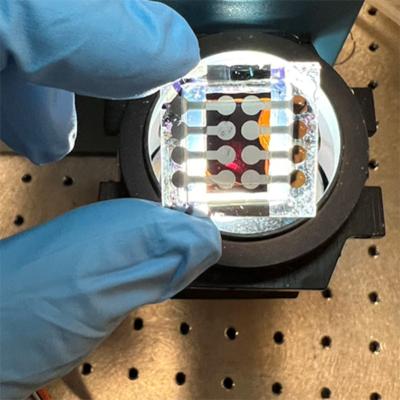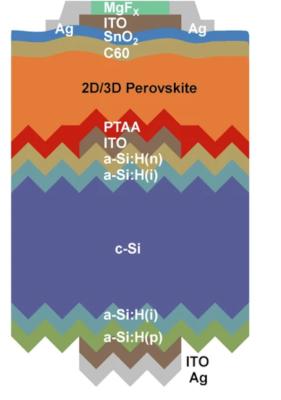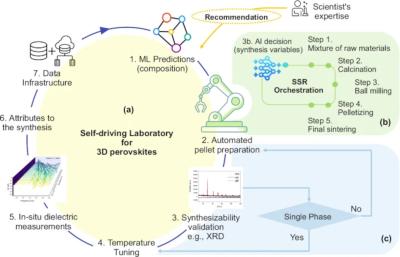Researchers report an effective method to enhance electron transport in wide bandgap and perovskite-silicon tandem solar cells
An international team of researchers, including ones from the University of Sydney, IEK-5 Photovoltaics at Forschungszentrum Jülich, Southern University of Science and Technology, UNSW and the University of Ljubljana, recently reported the use of a piperidinium bromide (PpBr) as an interlayer between C60 and perovskite. The interlayer was further optimized by introducing an additional oxygen atom on the opposite side of the NH2+.
The tandem structure that the team used for demonstrations. Image credit: Advanced Energy Materials
This reportedly resulted in morpholinium bromide (MLBr) with increased dipole moment. Because of this, MLBr was highly effective in minimizing the energy band mismatch between perovskite and C60 layer for electron extraction while at the same time passivating defects.



